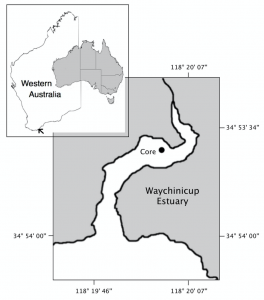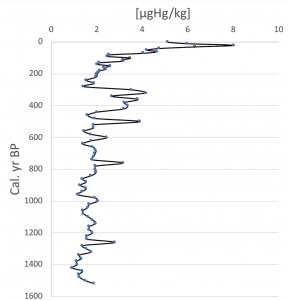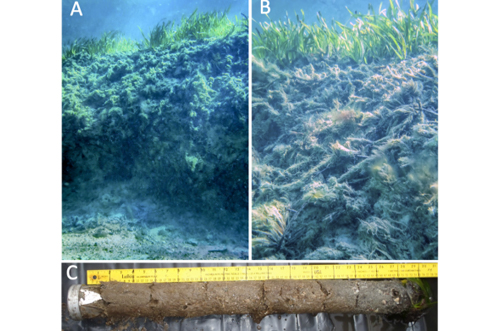Natural archives can be used to reconstruct the trends of mercury (Hg) fluxes over temporal and spatial scales. However, the majority of studies have been carried out in the Northern Hemisphere, with only a small number of records available in the Southern Hemisphere. Additionally, Hg fluxes are not well characterized for coastal areas. This study presents the reconstruction of changes in Hg fluxes in coastal ecosystems over the last 3,000 years in Waychinicup Inlet (Fig.1), a remote estuary in southwestern Australia, using a seagrass Posidonia australis sedimentary archive.

Our results (Fig. 2) showed that Hg concentration remained relatively constant (~2 µg Hg kg-1) from 3,000 Cal. yr BP until 100 Cal. yr BP, and increased over the last century (from 2 to 8 µg Hg kg-1). The up to 4-fold increase in Hg concentration since 1900s is likely explained by differences in organic carbon content along the archive, rather than increased pollution. The Hg fluxes also increased 3-fold since European settlement in Australia, which could be linked to increased run-off and associated Hg in the estuary owing to deforestation within the catchment. The results obtained provide initial evidence of the key role of seagrass meadows as natural archives of environmental pollution in coastal areas, and as a filter and sink of Hg.

By Dr Oscar Serrano – Edith Cowan University


Twitter